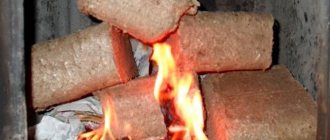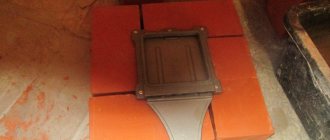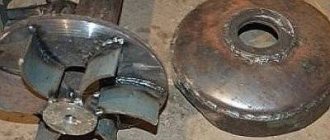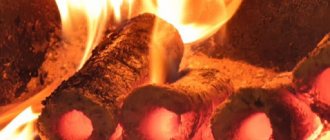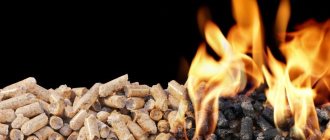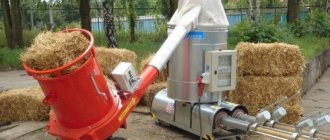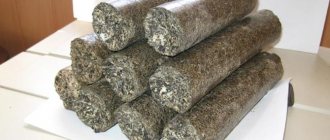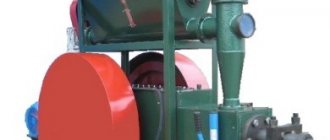Modern technologies manifest themselves in places where, it would seem, nothing new can be invented. An example of this is fuel briquettes or, as they are also called, Euro firewood. This is the same wood, but due to special processing it has received new properties that allow it to burn with greater efficiency.
Their creation does not require space technology - the simplest machine for making fuel briquettes is a press. Therefore, you can arrange the production of modern fuel with some properties improved compared to conventional firewood with your own hands.
Why are briquettes good?
Fuel briquettes are crushed wood and wood waste, compressed into a form convenient for transportation and storage.
As a result of processing on machines by pressing under high pressure, the finished briquettes acquire new qualities. Their use instead of conventional firewood in stoves, fireplaces and wood-burning boilers provides the following advantages:
- increased combustion temperature and, accordingly, better heat transfer;
- a higher density of briquettes leads to longer burning of the same volume;
- reduced formation of soot and ash residues;
- Briquettes are produced in various shapes - short cylinders, rectangular bricks. But in any case, they are convenient for storage and carrying.
When compared with conventional firewood, Euro-firewood will not be worse in any respect. The disadvantages include the fact that by the appearance of the briquette it is not always possible to determine the specific wood from which it is made. And if, for example, birch briquettes are required, then you have to rely on the integrity of the manufacturer.
Industrial production
The first step in producing fuel briquettes in an industrial environment is grinding the material on special machines. Often the raw materials for making briquettes are wood processing waste - shavings, sawdust, wood chips. Large pieces of wood are crushed to sawdust no larger than 4 mm.
Then the wood is thoroughly dried. The specific humidity of the material is brought to 10% or even less. The drier the wood for subsequent briquetting, the better the quality of the finished fuel.
The final stage is obtaining the fuel briquettes themselves. To do this, the prepared raw materials are subjected to powerful pressure. The temperature rises, and a sticky component, lignin, is released from the wood pulp. Under high pressure and in the presence of lignin binder, wood pulp is formed into a single solid briquette.
The density of such a product exceeds the density of natural wood by 1.5-2 times, which provides briquette fuel with increased heat transfer and increases combustion duration. In the industrial production of Euro-firewood, two methods of compression are distinguished.
Pressing method
In pressing, the raw materials are pressed into prepared molds using a hydraulic press. The typical pressure in a machine for pressing the production of fuel briquettes is 300-600 atmospheres. The output is briquettes in the form of rectangular bricks or short cylinders, depending on the shape in which they are pressed.
Extrusion method
With this method, wood pulp is constantly squeezed out of the outlet of the working channel. The raw material is loaded into a hopper, from there it is fed into the working channel, where it is additionally heated. The channel is made in the form of a cone, tapering towards the exit. The supply of raw materials from the hopper and its compression in the working channel is carried out on the machine using a screw screw. Such a screw-based press provides pressure on the raw material mass of up to 1000 atmospheres. The compressed “sausage” coming out of the extrusion unit is cooled and cut into rods of the required size.
Technological process
To make briquettes you will need clay and, of course, sawdust. They are mixed in a ratio of 10:1, water is added until the consistency of the solution becomes formative. It is very important that the clay, which is the main binding element, evenly occupies the entire volume of sawdust.
You can mix the mixture by hand, but it is better to use a construction mixer. He will do this job quickly and efficiently.
To form briquettes, a variety of materials are suitable:
- boxes;
- discarded pots;
- any container.
Boxes are considered the best molding materials, since they have a precise geometric configuration and rectangular cross-section. In this form it is easier to store them, because storing them will not cause any difficulties.
The formation of the future fuel should be carried out by pressing the finished solution.
The last manufacturing operation is drying. It’s good when it’s bright sunny weather outside, because briquettes dry very quickly in such conditions.
To add strength, it is necessary to line the bottom of the box and its walls with paper before the formation process. Then pour in the prepared solution and press.
Do-it-yourself briquetting - pros and cons
It is possible to make a press yourself and set up the production of fuel briquettes. But this requires material costs, physical effort and time. It is also necessary to take into account that it is unlikely that it will be possible to achieve the quality of European firewood produced in factories. Of course, you can purchase a machine that is not much inferior to a production one, but the acquisition costs will be colossal.
You need to have a good idea of why you need your own production, what the conditions are for this, and what the costs will be. Maybe you shouldn’t give up regular firewood or it might be better to buy ready-made briquettes for heating.
pros
The positive aspects of homemade are as follows. Your own fuel briquettes will not provide the same combustion quality as purchased briquettes, but they will be more efficient than firewood.
If it is possible to obtain a large amount of wood waste - sawdust, small trimmings, shavings, bark - then it is more profitable to make compressed firewood from them. Sawdust and shavings in their pure form are of little use for combustion, but after processing on a sawdust pressing machine they produce good fuel.
You can use not only wood, but also any other combustible waste - straw, dry leaves, paper, cardboard. Separately, none of them are flammable material, but briquettes will be useful. Briquetted fuel is convenient for storage and loading into the firebox.
Minuses
But there are also disadvantages to keep in mind. Attempts to improve the quality of home-made European firewood can lead to the purchase of expensive equipment or the constant addition of existing equipment. As a result, it turns out that producing your own briquettes will not justify the costs.
Homemade fuel briquettes require space for proper drying. Drying in the sun is not always justified. A spacious, dry room is required. Homemade briquettes should also be stored so that they do not absorb moisture.
Homemade Bonding Materials
Using homemade machines, it is almost impossible to achieve the pressure at which lignin is released from wood pulp. Therefore, it is necessary to add materials to the raw materials for independent briquetting that will help bind and glue the raw materials into a monolithic briquette. Most often used for these purposes:
- clay. Volume proportion 1 to 10 wood raw materials;
- glue. Any will do, but, naturally, it’s better to take the cheapest one;
- shredded paper or cardboard. In addition to the fact that it is also a flammable material, paper contains lignin. And paper lignin exhibits its adhesive properties when soaked. True, then you will need additional time to dry the briquettes containing paper.
In order for binding additives to fully demonstrate their properties, they must be thoroughly mixed with combustible raw materials, and then this mixture must be soaked in water.
Note! In industrial production, the raw materials are thoroughly dried before pressing, and in homemade production, they are thoroughly soaked.
This is the main difference between homemade ones. Fuel briquettes are dried after pressing so that they harden, hold their shape and burn well.
Homemade machine
There is information about the manufacture of homemade screw extrusion plants at home. But even the creators of such efficient machines for the production of fuel briquettes note that the devices require high-quality materials and the use of an electric motor. It is much easier to make a regular press instead of a complex machine.
Hand press
Presses that use only manual effort come in two types: screw and lever. In screw versions, the rod, which compresses the raw material mass, is moved by tightening the screw. In lever presses, pressure is created by one's own muscular efforts using the length of the lever. With a screw installation, greater pressure is achieved and the quality of fuel briquettes becomes better. But tightening and unscrewing the screw takes time, so productivity is low. Lever presses are faster. You just need to think about the method or mechanism for pushing the finished briquette out of the pressing mold. The same form should have holes for water to escape when compressed, since during manual production the raw materials are soaked.
Shredders
An important step in the production of briquettes is the grinding of wood raw materials. Of course, you can do this manually, using simple cutters. But it will be more effective to mechanize this process. A rotary machine used for grinding plant matter in the production of fertilizers at home is suitable. Craftsmen also use old activator-type washing machines for these purposes. Knives are attached to the activator, crushing the loaded raw materials.
Press with screw mechanism
It can be called the simplest, made by home craftsmen. The mixture is poured into a perforated molding container, after which it is placed under the bed. Slowly tighten the screw to create the required pressure. The operating principle and structure of such a press are clearly visible in the presented figure.
Screw machines for making briquettes from sawdust of this type have not become popular, as they have very low productivity. It takes a long time to load the mold, tighten the screw, and remove the finished product.
It is much easier and faster to produce “brick” briquettes on a homemade press, which uses a long lever and a system for “pushing” them out of the mold. To make the process faster, some summer residents weld two forms to the frame at once.
Not all craftsmen are satisfied with handmade work. There is also improved mechanized equipment. For example, to make a machine for making briquettes from sawdust more productive, you can replace the manual drive with a hydraulic jack. Of course, assembling such a unit will require some effort, but the result will increase efficiency.
In no home-made press that uses a hydraulic jack, it is impossible to obtain a pressure higher than 300 Bar. To get closer to factory technology, it is necessary to add water and use additional binders.
Even difficulties in making parts do not stop home craftsmen. They were able to independently make a screw press, which produces briquettes of very good quality. However, great costs had to be incurred to make the screw and housing using high-alloy steels.
